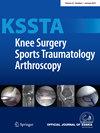Preoperative CPAK phenotype does not affect clinical and radiological outcomes after medial closing-wedge distal femoral osteotomy in valgus knees at 8-year follow-up
Abstract
Purpose
To evaluate the distribution of coronal plane alignment of the knee (CPAK) phenotypes before and after medial closing-wedge distal femoral osteotomy (MCW-DFO) and assess their correlation with long-term clinical outcomes in valgus knee deformity.
Methods
This retrospective analysis included patients who underwent MCW-DFO for valgus knee correction between 2007 and 2022. Preoperative and post-operative knee alignment was assessed using standard long leg weight-bearing radiographs, and clinical outcomes were evaluated using International Knee Documentation Committee (IKDC), Knee injury and Osteoarthritis Outcome Score (KOOS), Tegner and visual analogue scale (VAS). Patients were stratified based on preoperative and post-operative CPAK classification phenotypes. Outcomes were compared between the most common preoperative and post-operative CPAK phenotypes.
Results
Fifty-one patients (54 knees) were included in the study, with a mean age of 48.7 ± 13.2. The overall mean follow-up was 97 ± 57 months. Statistically significant improvements were observed in all clinical scores, and a statistically significant radiological correction of valgus was achieved following MCW-DFO. According to preoperative CPAK phenotype, the most prevalent groups, CPAK 6 and 3, showed no significant differences in clinical outcomes (final IKDC CPAK 3: 60.7 ± 12.2, CPAK 6: 62.9 ± 17 [p = 0.67]; final KOOS CPAK 3: 76.8 ± 6.9, CPAK 6: 77.3 ± 14.9 [p = 0.37]). Similarly, stratification by post-operative CPAK showed no significant differences between CPAK 5 and 8 (final IKDC CPAK 5: 63.3 ± 15.7, CPAK 8: 71.1 ± 10.2 [p = 0.12]; final KOOS CPAK 5: 79.8 ± 7.9, CPAK 8: 82.3 ± 9.3 [p = 0.53]). During the study period, one patient (1.8%) sustained a peri-implant fracture, one patient (1.8%) underwent re-intervention due to pseudoarthrosis and three patients (5.5%) underwent total knee arthroplasty.
Conclusions
MCW-DFO is a safe, effective treatment for symptomatic valgus knee deformity. Surgical correction achieved a neutral mechanical axis (CPAK 5 and 8), with no clinical differences for different JLO values.
Level of Evidence
Level III, case–control study.


 求助内容:
求助内容: 应助结果提醒方式:
应助结果提醒方式:


